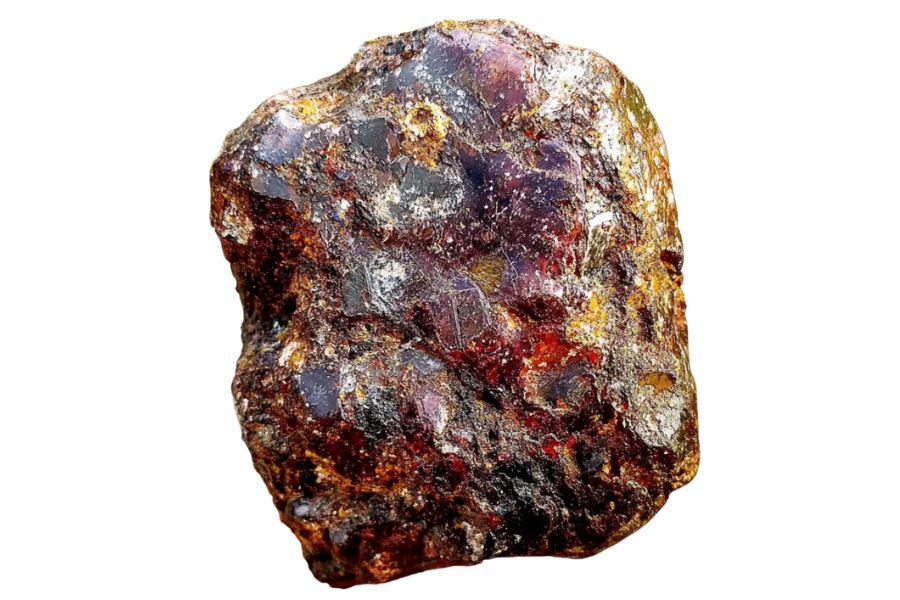Red garnets sparkle in streams and hillsides across Georgia. These beautiful gems attract rockhounds from all over who want to add them to their collections.
Many hunters look in the wrong places. They wander aimlessly through public lands, checking random creeks and leaving disappointed. Hours wasted with nothing to show but muddy boots and empty collection bags.
We’ve mapped the best garnet spots in the state. We’ve put together locations that actually produce results. These aren’t just rumors – these are proven places where garnets hide.
Stop wasting your weekends on empty searches. Our guide points you directly to productive sites so you can fill your collection with Georgia’s beautiful red treasures.
How Garnet Forms Here
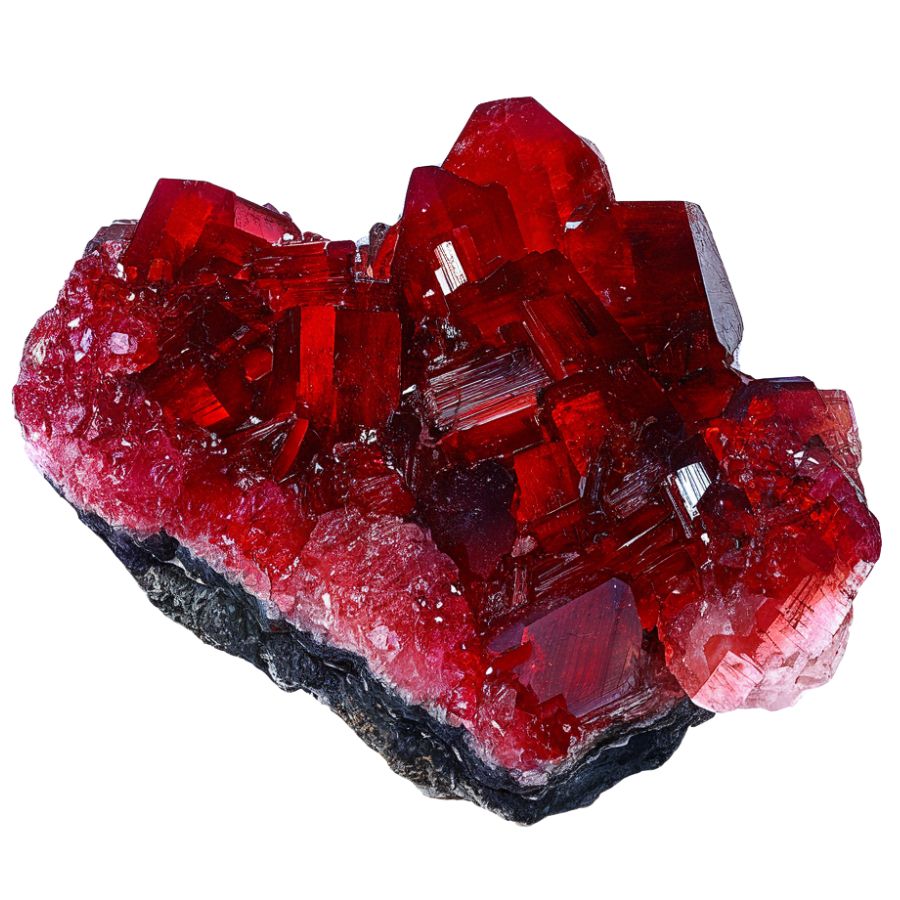
Garnet forms deep underground when rocks get squeezed and heated during metamorphism. Think of it like baking cookies – but instead of dough, you’ve got minerals like aluminum, iron, and silica getting cooked under intense pressure.
When these minerals reach temperatures around 400-700°C, they start rearranging their atoms into garnet’s distinctive crystal structure.
What’s cool is that garnets often grow by pushing other minerals out of the way! That’s why they form those perfect geometric shapes.
Most garnets need high pressure too, which is why they’re usually found in rocks that were once buried miles beneath the surface. The slower they grow, the bigger and clearer they become – some taking millions of years to reach their full size.
Types of Garnets
Garnets are captivating gemstones that showcase an impressive range of colors and varieties, each determined by their unique chemical composition. Understanding these differences helps in identifying the stone’s value.
Almandine Garnet
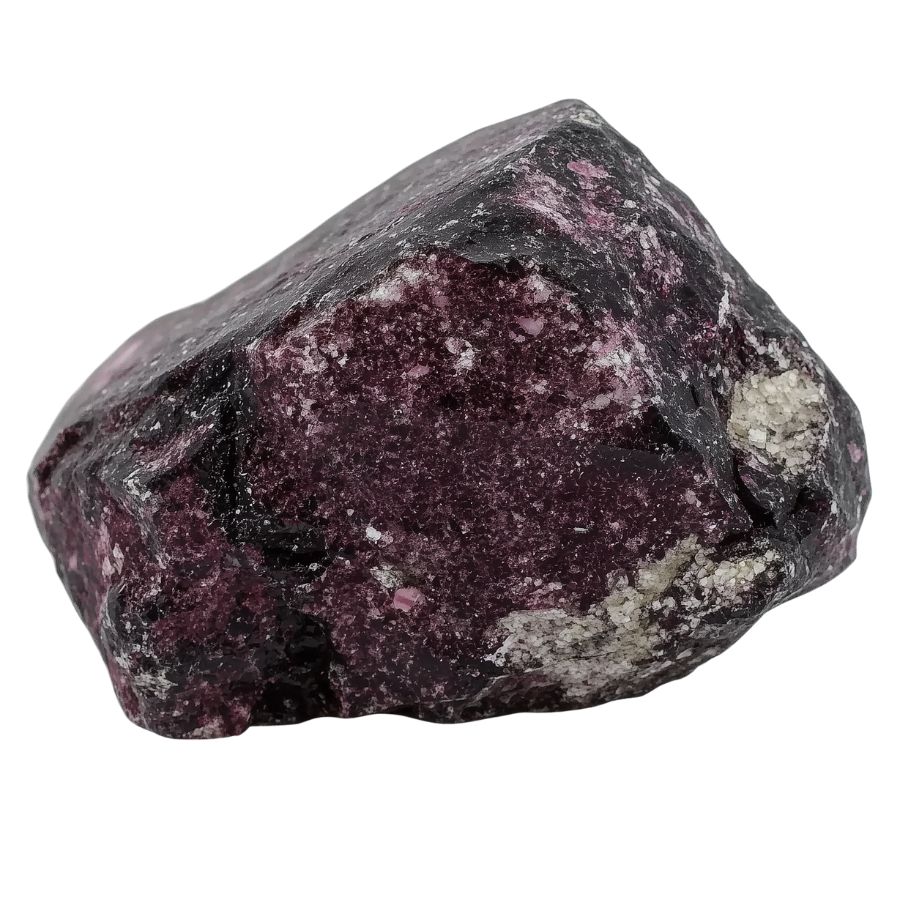
Almandine garnet stands out with its rich, deep red to reddish-brown color. The stone sometimes shows hints of orange or brown, making each piece unique. Its color intensity remains consistent throughout the stone, creating a beautiful depth that catches the eye.
The crystal structure of almandine follows a perfect cubic pattern, forming well-defined shapes with smooth faces. This symmetry contributes to its striking appearance and helps light bounce through the stone evenly.
What makes almandine special is its high iron content, which gives it a higher specific gravity than other garnets. This means it feels slightly heavier in your hand compared to similar-sized stones. Its refractive index of 1.74 to 1.83 creates excellent brilliance and fire.
Most almandine garnets are remarkably clear, though some may contain natural inclusions that create interesting patterns. These patterns can add character to the stone without affecting its overall beauty or durability.
Pyrope Garnet
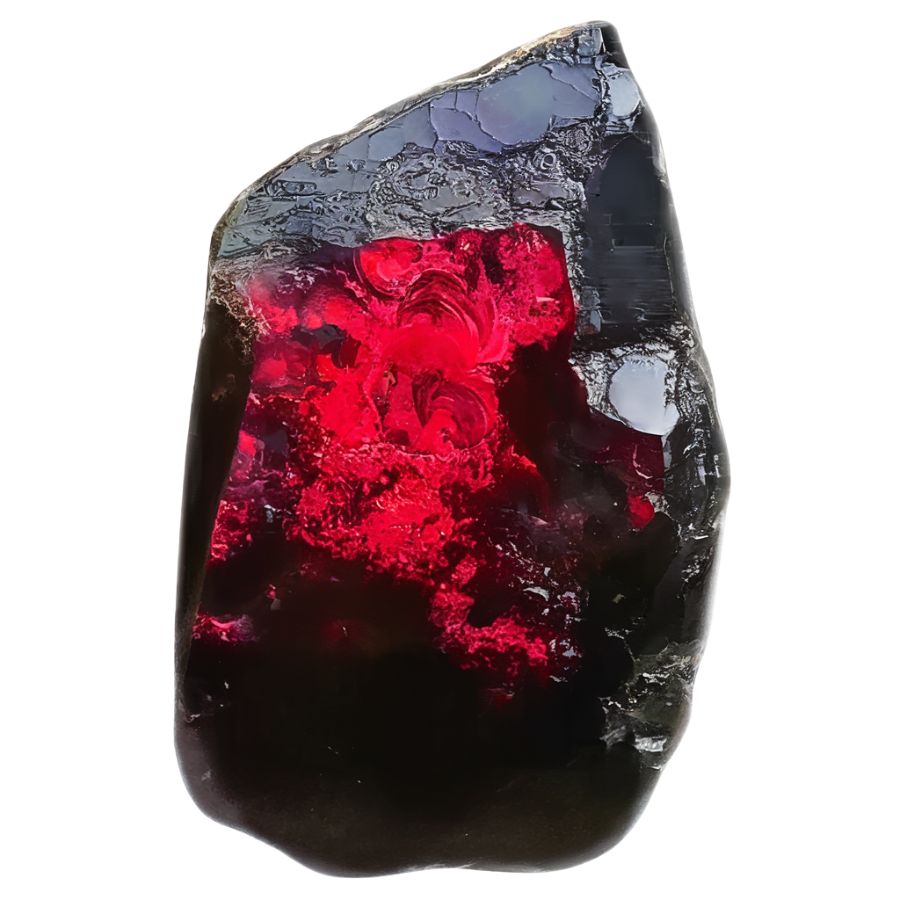
Pyrope garnet captivates with its intense red-to-purplish-red color. The color is so pure and vibrant that some specimens have earned the nickname “Cape Ruby.”
This stone has excellent clarity, rarely showing visible inclusions. When present, some inclusions can create a fascinating star effect called asterism, where a six-pointed star seems to float on the surface.
The stone appears especially vivid when cut into clean, geometric shapes that maximize light return.
Some pyropes show a subtle color shift, appearing slightly different under natural and artificial light. This subtle change adds to their charm and makes each stone unique.
Their exceptional clarity and lack of internal flaws make them particularly appealing to collectors.
Spessartine Garnet
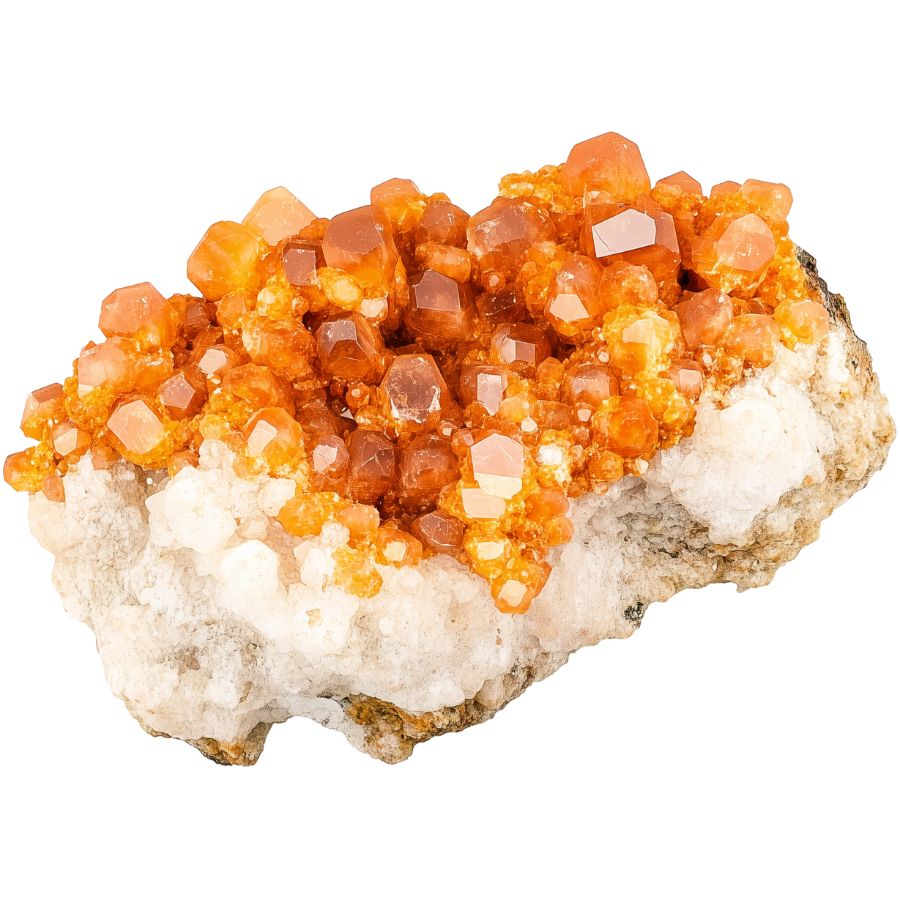
Spessartine garnet showcases a stunning range of orange colors, from bright mandarin to deep reddish-orange. The most valued pieces display a pure, vivid orange. This distinctive coloring comes from manganese in its chemical makeup.
When cut properly, spessartine exhibits bright flashes of light and exceptional sparkle. Some stones show a subtle “sugar-like” texture that creates a soft, internal glow.
Pure spessartine is rare in nature, making high-quality specimens particularly valuable. Most stones contain trace elements that create subtle color variations.
The stone’s transparency ranges from completely clear to slightly cloudy. Clear specimens are highly prized, but some collectors prefer stones with slight cloudiness that creates an interesting depth effect.
Andradite Garnet
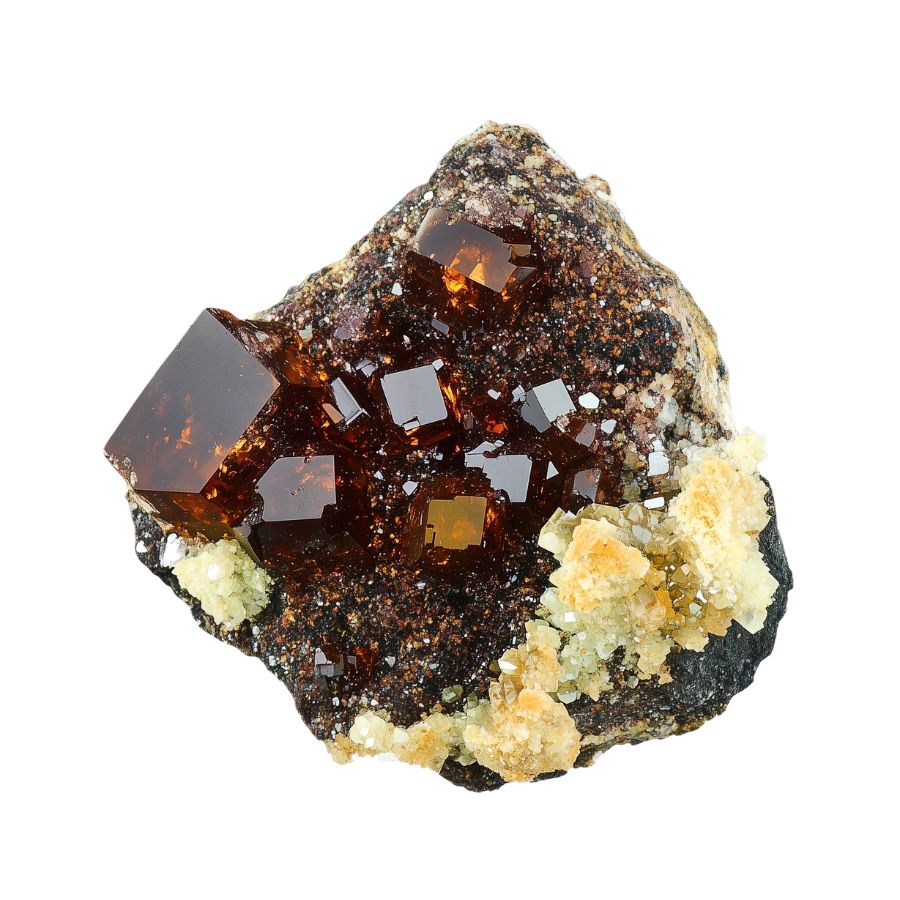
Andradite garnet displays the widest color range of all garnets. Colors span from bright green to yellow, brown, and black. The green variety, known as demantoid, is particularly treasured for its brilliant, emerald-like color and exceptional sparkle.
This stone has the highest dispersion rate of all garnets, even higher than diamond. This means it breaks light into rainbow colors more effectively, creating fascinating fire and brilliance.
Some andradite garnets contain unique internal features called “horsetail” inclusions. These fine, needle-like patterns are actually desired by collectors and add to the stone’s value.
The stone’s surface has a bright, glass-like luster that enhances its natural beauty. Some specimens exhibit unique optical features such as asterism (star-like patterns) and chatoyancy (cat’s eye effect), which further enhance their visual appeal.
Grossular Garnet
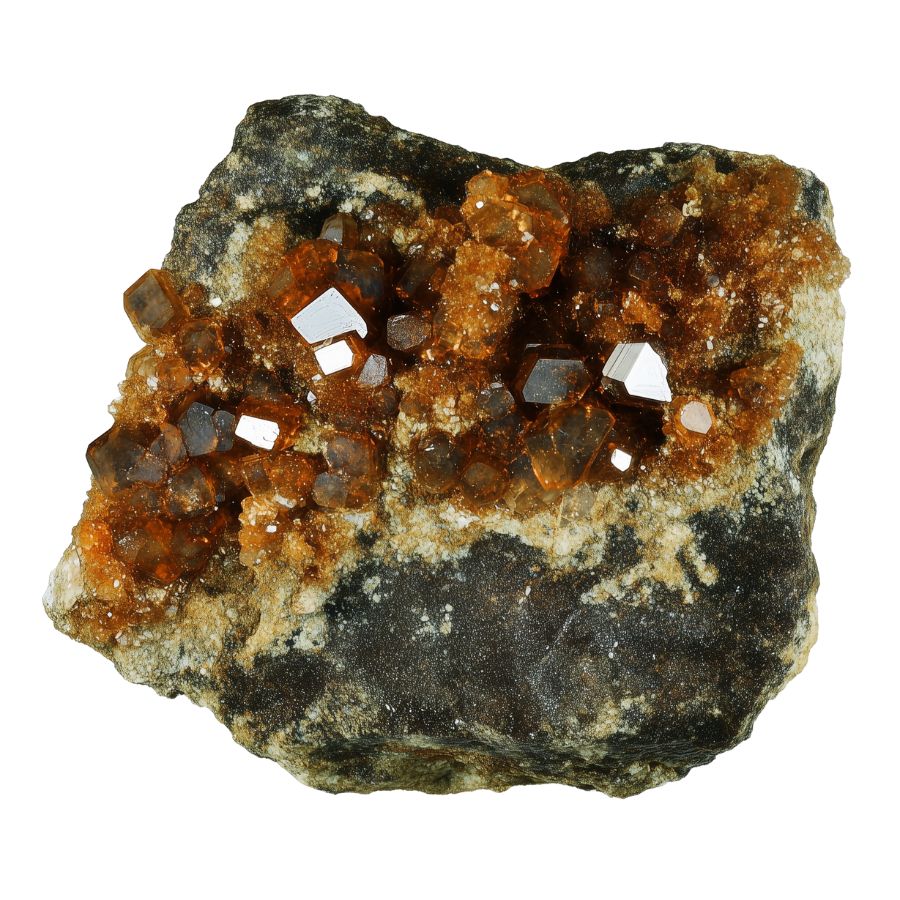
Grossular garnet comes in an amazing range of colors – from green and yellow to pink, orange, and even colorless. The most striking feature is the presence of internal swirls and streaks that create unique patterns within each stone.
The stone’s surface has exceptional brilliance that rivals expensive gems like emeralds. Light bounces through it beautifully, creating bright flashes and sparkles.
A special variety called Mint Garnet glows under ultraviolet light, creating an otherworldly effect. This unusual property makes it particularly interesting to collectors. The stone’s clarity is typically excellent, with few visible impurities.
The presence of trace elements like chromium and vanadium creates its varied colors. These elements mix in different amounts, resulting in subtle color variations that make each stone unique.
Some pieces show color zoning, where different shades blend together in distinct patterns.
Uvarovite Garnet
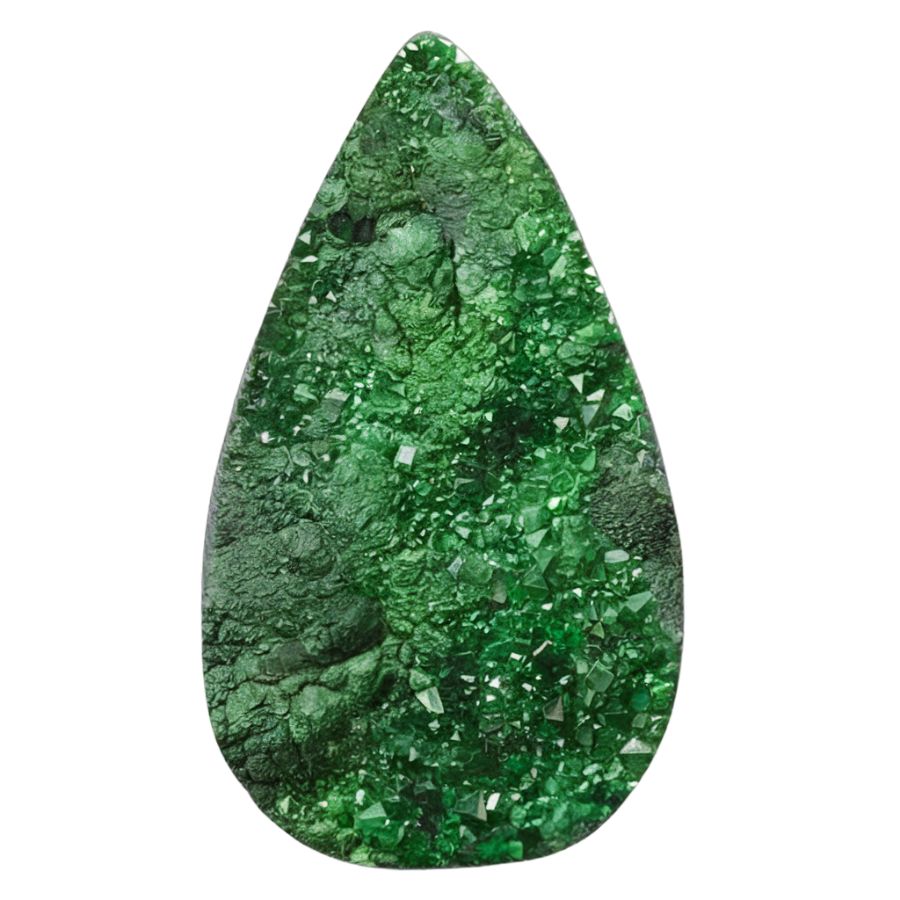
Uvarovite garnet displays a striking emerald-green color that remains consistent in all specimens. Unlike other garnets, where green hues may arise from chromium impurities, uvarovite’s green is inherent to its composition.
Instead of forming large crystals, uvarovite typically grows in clusters of tiny crystals. These clusters, called druzy, create sparkling surfaces that look like green sugar coating the rock beneath.
Under ultraviolet light, it shows an unexpected red glow, adding another layer of interest for collectors. This fluorescence is a unique feature not commonly found in other garnets.
These stones rarely grow large enough for traditional gem cutting. However, their natural crystal formations are so beautiful that they’re often left in their original state. The tiny crystals catch light from multiple angles, creating a dazzling display.
Rhodolite Garnet
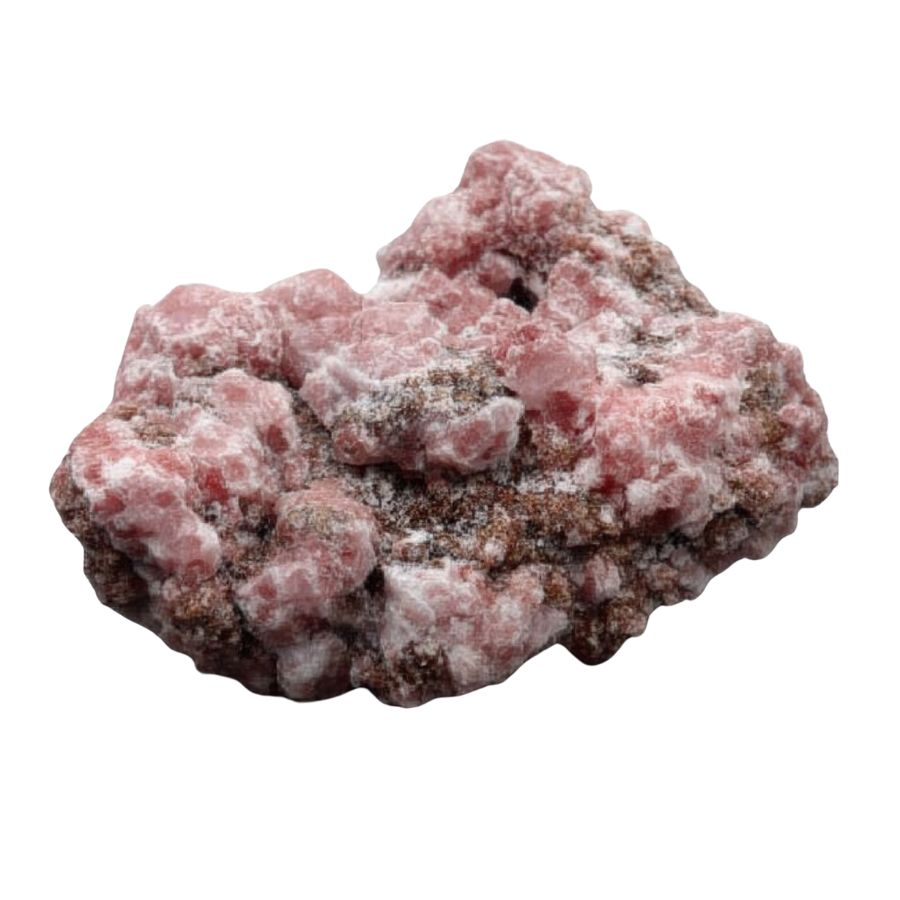
Rhodolite garnet stands out with its beautiful purple-red to raspberry-pink colors. The colors can shift between purple and red depending on the lighting, creating an interesting play of hues. This color range makes it distinctly different from the deeper reds of other garnets.
The stone’s clarity is typically excellent, with very few internal features visible to the naked eye. The surface has a glass-like shine that enhances its natural beauty.
What makes rhodolite special is its mixed composition of two different garnet types. This mixture creates its unique color range and optical properties. The stone often shows stronger color saturation in its center, fading slightly toward the edges.
Rhodolite garnet is particularly valued for its vibrant colors that can mimic more expensive gemstones like rubies and amethysts, making it a popular choice among collectors and jewelers alike.
Hessonite Garnet
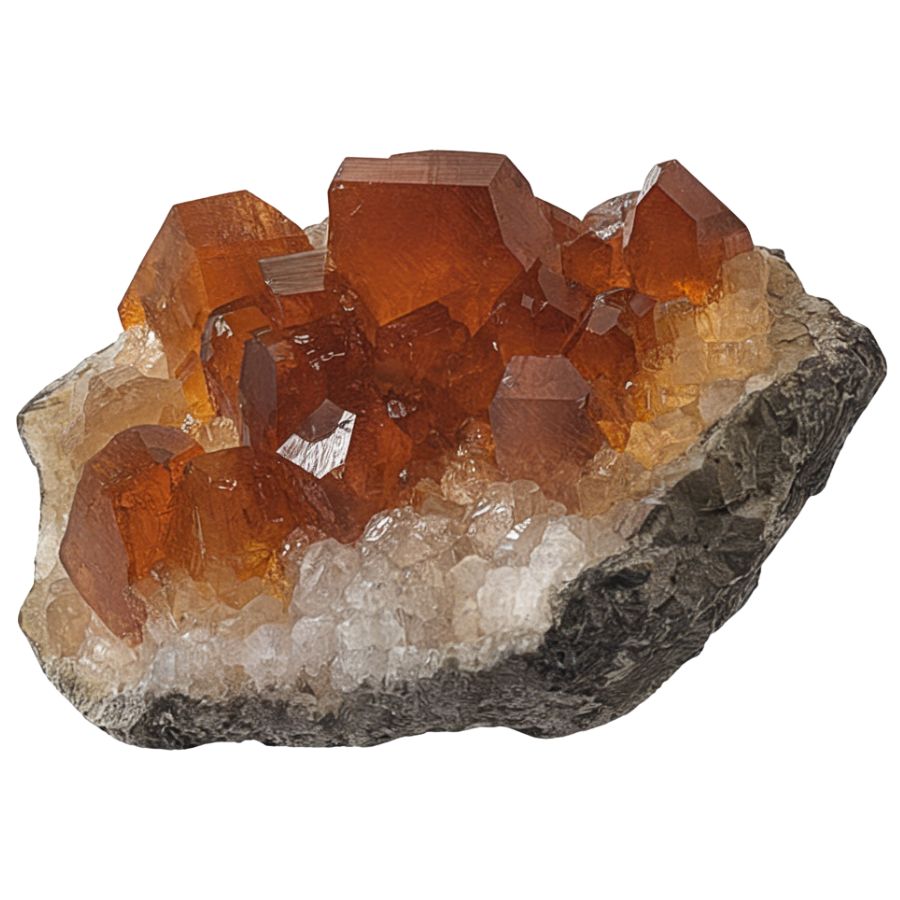
Hessonite garnet showcases warm honey-to-cinnamon colors, ranging from golden yellow to deep reddish-brown. Some pieces display hints of purple, creating complex and appealing color combinations.
Inside the stone, you might find interesting patterns created by tiny needle-like crystals. Unlike many gems where inclusions reduce the value, these internal features are appreciated in Hessonite. They create unique patterns that make each stone one-of-a-kind.
The stone’s transparency varies from crystal clear to slightly cloudy. This variation can create interesting effects, especially when light passes through the stone. Some pieces show a subtle glow that seems to come from within.
High-quality hessonite stones are relatively uncommon, especially in larger sizes. Their warm colors and unique internal features make them particularly interesting to collectors.
Tsavorite Garnet
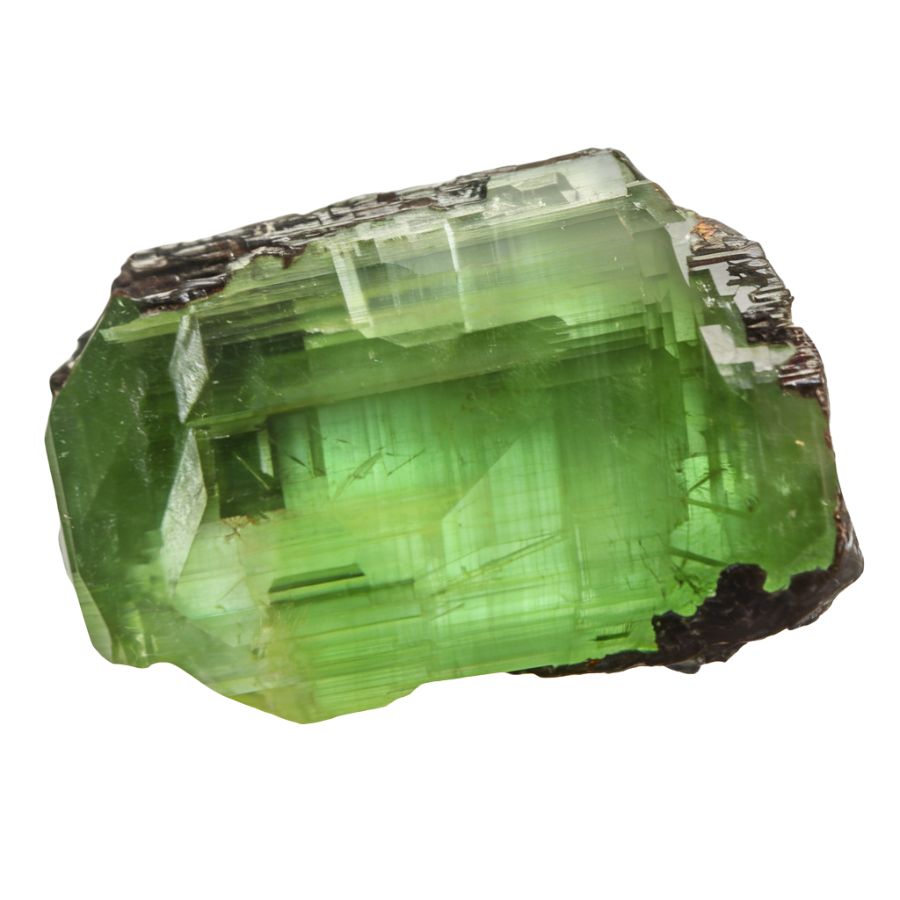
Tsavorite garnet displays a brilliant green color that ranges from bright lime to deep forest green. This stunning color comes from tiny amounts of chromium and vanadium in the stone.
The green is so pure and vibrant that it often matches or surpasses the color of fine emeralds. The surface has a glass-like shine that makes the stone look alive with movement.
Each tsavorite has its own personality in terms of color depth and brightness. Some stones show subtle color changes under different lighting, while others maintain a consistent deep green.
Star Garnet
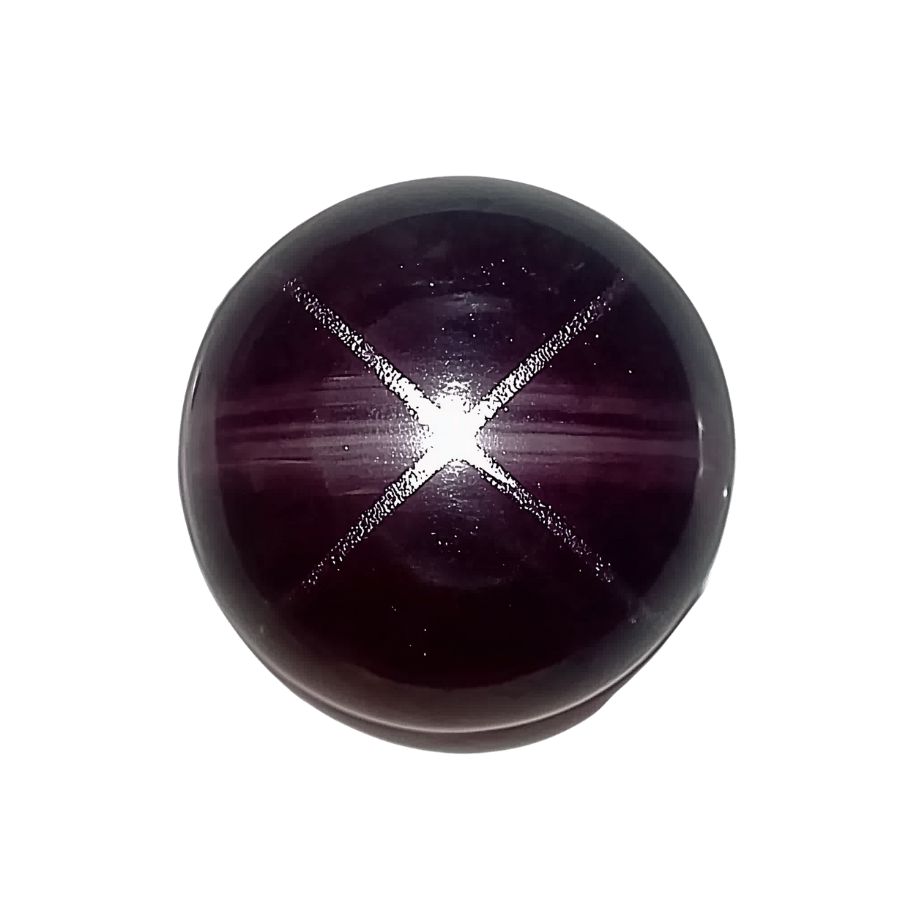
Star garnet shows a fascinating light pattern that looks like a star floating on its surface. This effect, called asterism, comes from tiny needle-like crystals inside the stone. The star usually has four or six rays that move as you turn the stone under light.
The stone’s color is typically deep red to purple-red, often with brown undertones. When polished into a smooth, rounded shape, the star effect becomes more prominent.
The best specimens show sharp, well-defined star rays against a rich, even background color. These stones are quite special because not all garnets can form stars.
The right conditions during formation must exist for the star effect to develop. The tiny crystals inside must align perfectly to create the star pattern. The star effect is natural and permanent – it won’t fade or change over time.
What Rough Garnets Look Like?
Garnets display unique identifying traits when found in their raw, natural state. Look for these distinguishing features:
Look for Distinctive Angular Shapes
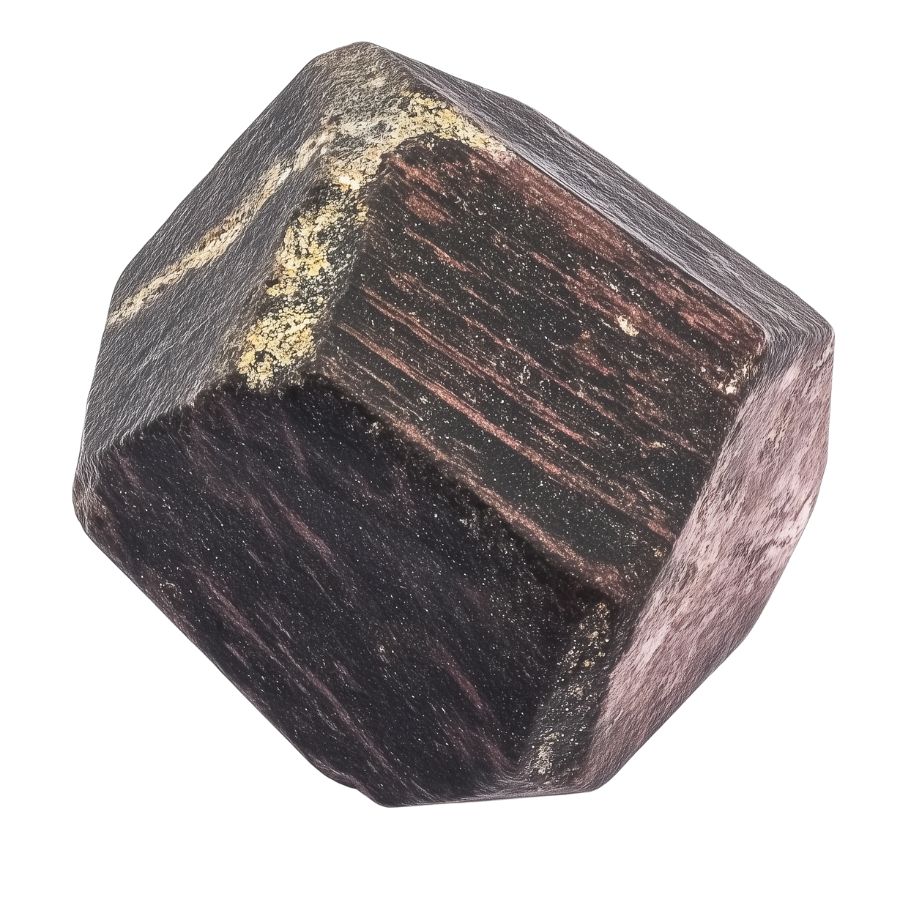
Raw garnet typically forms in dodecahedral or trapezoidal crystal shapes. Think of it like tiny, naturally-formed geometric shapes.
Unlike smooth river rocks, rough garnets have sharp edges and flat faces. Even when broken, they tend to maintain these angular patterns. You’ll often spot them as chunky, block-like crystals that look like they’ve been roughly carved.
Check the Color Range and Transparency
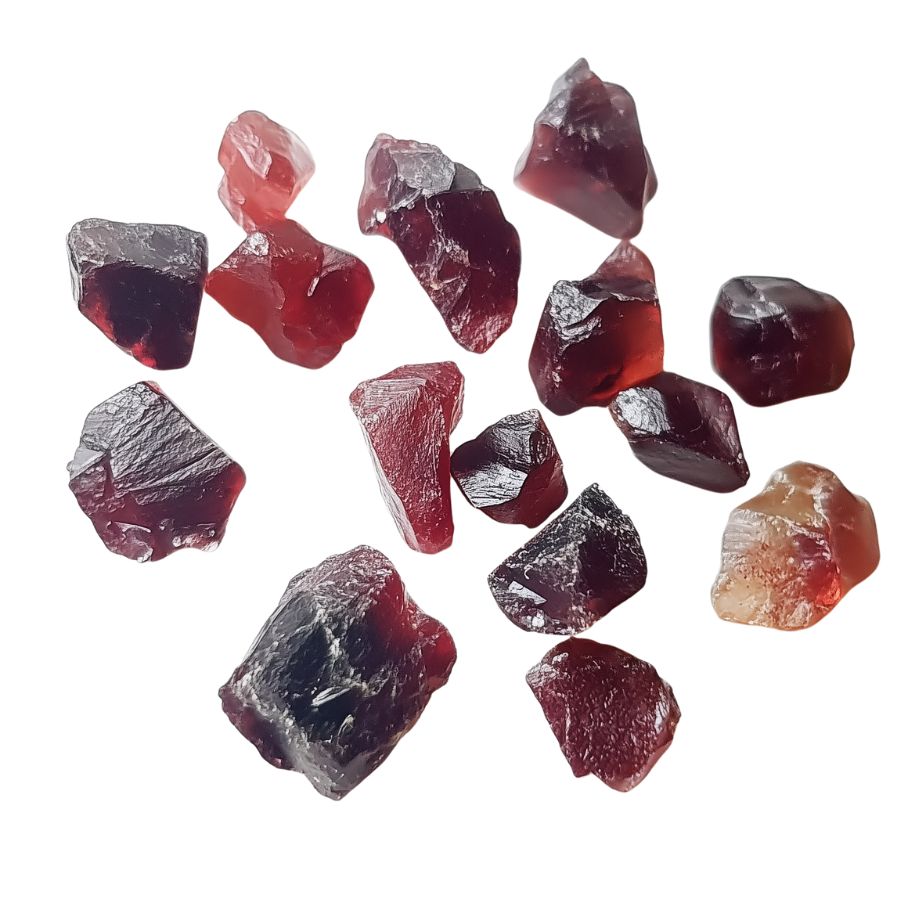
Garnets aren’t just red! Look for deep wine colors, but also keep an eye out for orange-brown, green, or even black varieties.
Hold it up to light – rough garnets often show some translucency at the edges, even if the center seems opaque.
Examine the Surface Texture
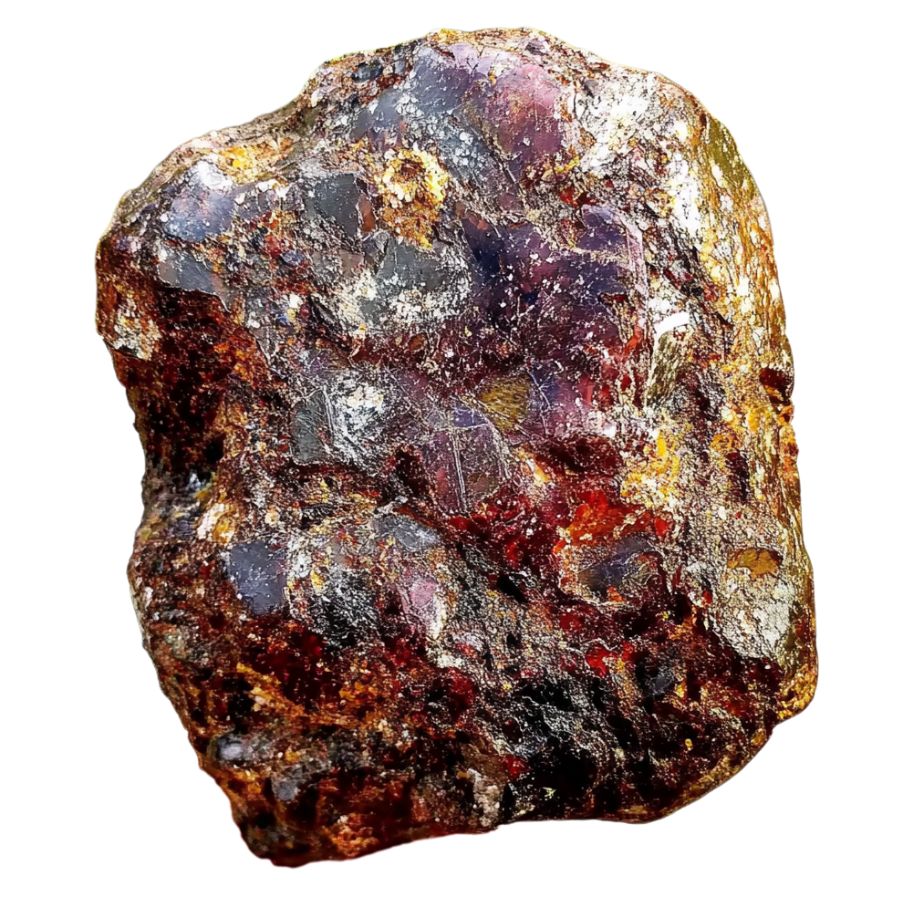
Raw garnets have this unique, almost greasy-looking surface luster. Not shiny like glass, but more like wet plastic.
Run your finger over it – you should feel a smooth yet slightly waxy texture. If it’s been weathered, the surface might be slightly pitted or rough, but you’ll still see that characteristic luster in protected areas.
Test the Hardness and Toughness
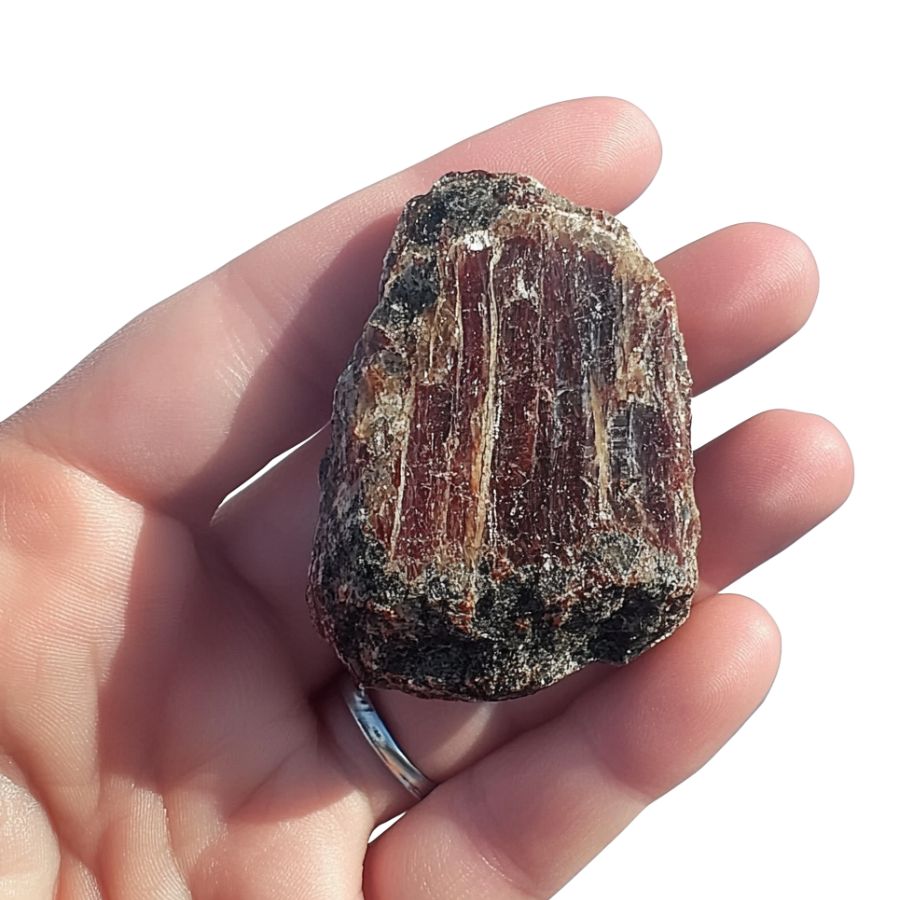
Here’s a quick field test: garnets can easily scratch a penny but won’t scratch quartz. They’re surprisingly heavy for their size – noticeably heavier than a similar-sized piece of quartz or feldspar. Don’t be fooled by lighter stones that look similar!
A Quick Request About Collecting
Always Confirm Access and Collection Rules!
Before heading out to any of the locations on our list you need to confirm access requirements and collection rules for both public and private locations directly with the location. We haven’t personally verified every location and the access requirements and collection rules often change without notice.
Many of the locations we mention will not allow collecting but are still great places for those who love to find beautiful rocks and minerals in the wild without keeping them. We also can’t guarantee you will find anything in these locations since they are constantly changing.
Always get updated information directly from the source ahead of time to ensure responsible rockhounding. If you want even more current options it’s always a good idea to contact local rock and mineral clubs and groups
Tips on Where to Look
To increase your chances of finding garnets, focus your search on these favorable areas:
Metamorphic Rock Outcrops

Look for dark-colored metamorphic rocks, especially schist and gneiss. These rocks often have visible layers or bands.
Garnets appear as dark red or brownish-red crystals embedded in the rock. Common near hiking trails and road cuts where metamorphic rocks are exposed.
Stream Beds & Gravel Banks
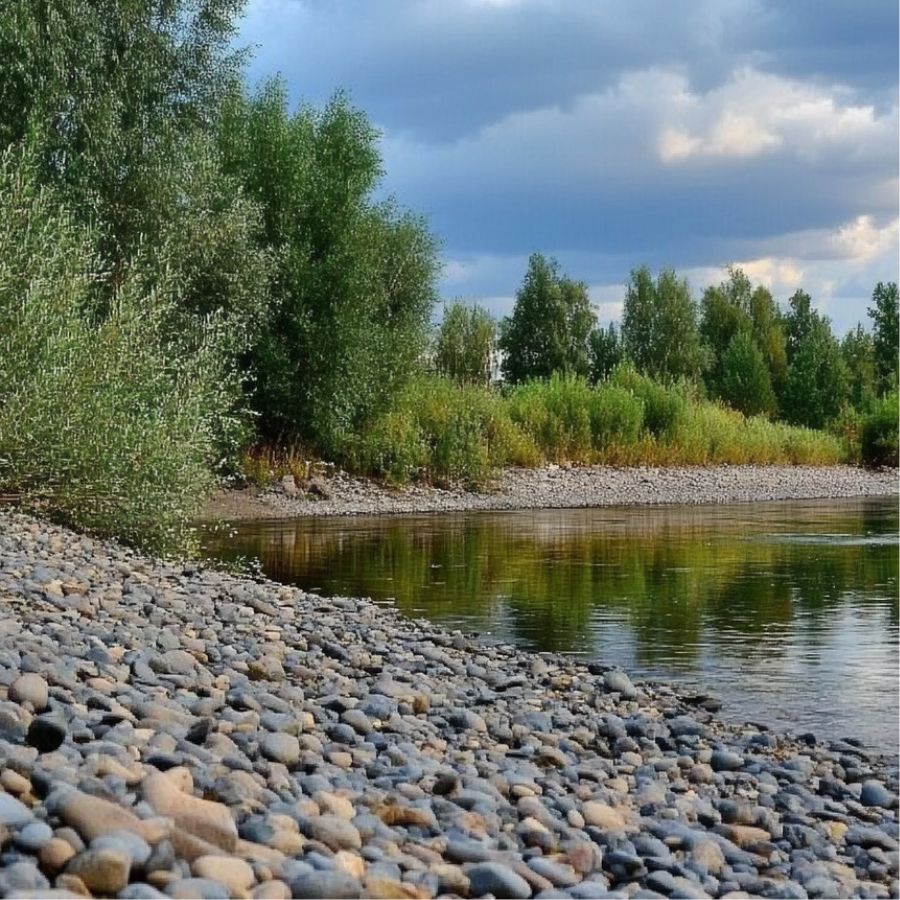
Check gravel deposits in streams, especially after heavy rains. Garnets are heavier than most minerals, so they concentrate in stream bends where water slows down.
Use a pan or sieve to sort through the gravel, keeping an eye out for the distinctive reddish crystals that glimmer when wet.
Pegmatite Areas
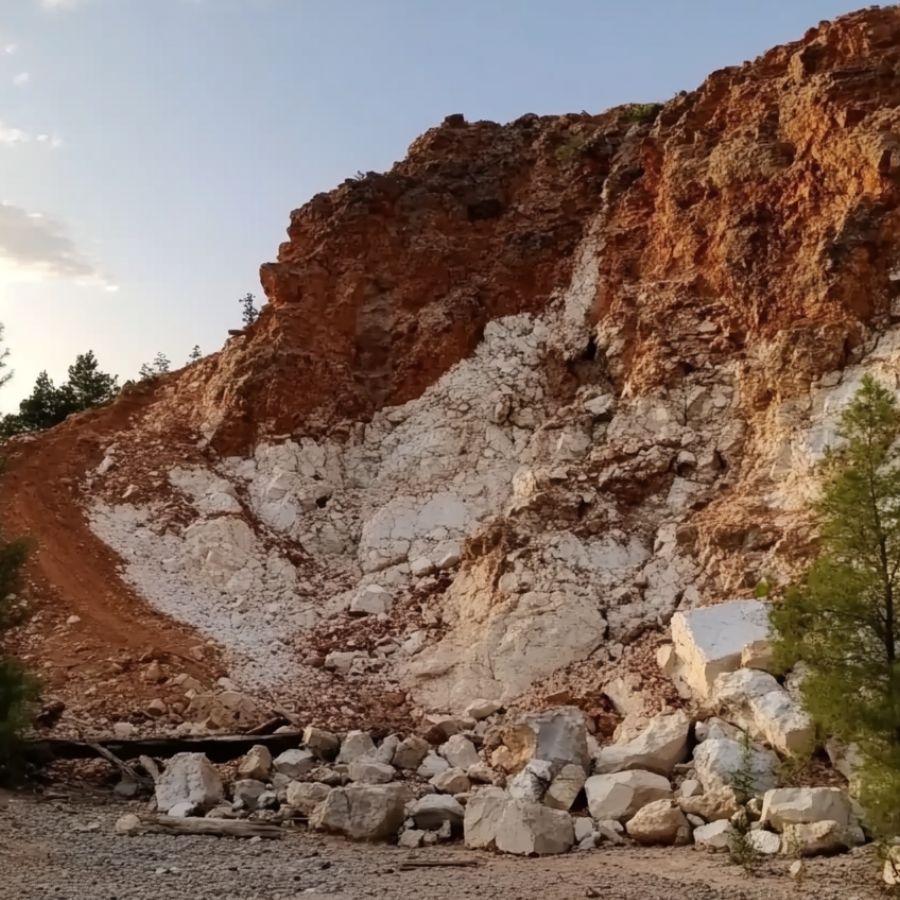
Search around pegmatite formations, which are coarse-grained igneous rocks that sometimes form large crystal pockets where beautiful garnet specimens can be found nestled among other minerals like mica and feldspar.
These areas often have scattered surface rocks and exposed cliff faces that weather over time, releasing garnet crystals.
Old Mining Areas

Explore permitted public mining dumps and tailings piles near historical mica or feldspar mines, where garnet was often discarded as a byproduct during past mining operations and can still be found in abundance among the leftover material.
Some Great Places To Start
Here are some of the better places in the state to start looking for garnet:
Always Confirm Access and Collection Rules!
Before heading out to any of the locations on our list you need to confirm access requirements and collection rules for both public and private locations directly with the location. We haven’t personally verified every location and the access requirements and collection rules often change without notice.
Many of the locations we mention will not allow collecting but are still great places for those who love to find beautiful rocks and minerals in the wild without keeping them. We also can’t guarantee you will find anything in these locations since they are constantly changing.
Always get updated information directly from the source ahead of time to ensure responsible rockhounding. If you want even more current options it’s always a good idea to contact local rock and mineral clubs and groups
Chestatee River
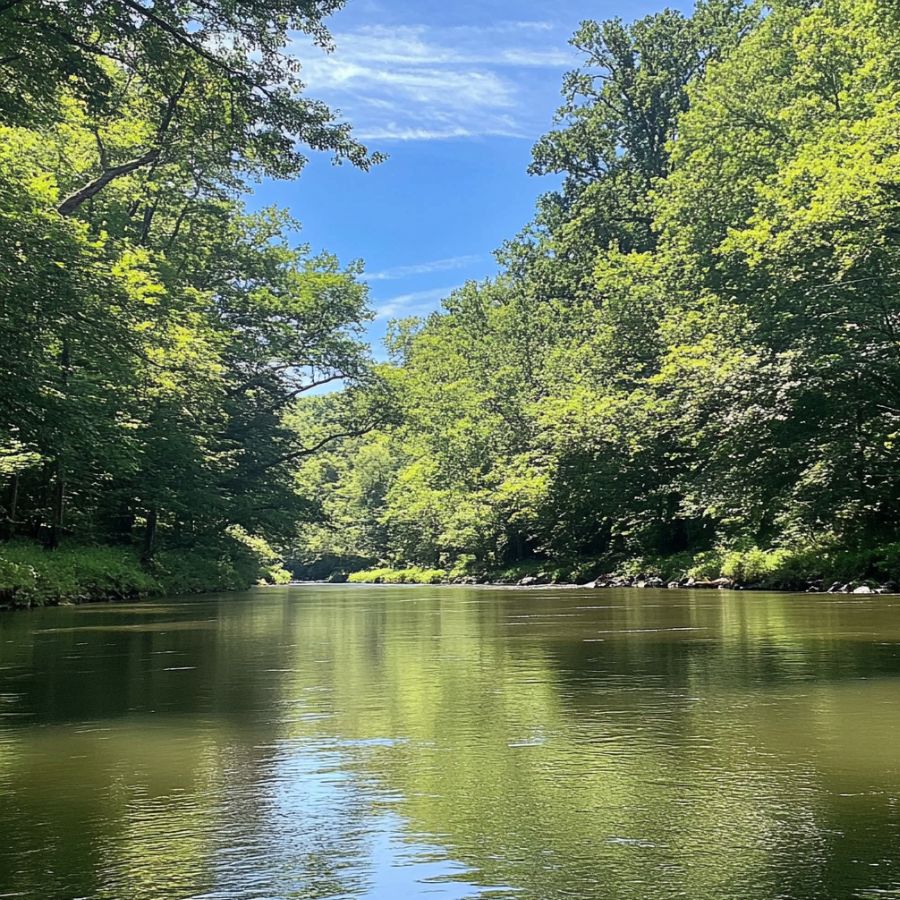
The Chestatee River flows for about 33 miles through the Appalachian Mountains of northern Georgia. This waterway begins where Dicks Creek and Frogtown Creek meet in Lumpkin County, then travels southward through historic Dahlonega before emptying into Lake Lanier.
Garnets have been found along this river. Many rockhounds search the riverbed and gravel bars where these reddish gemstones can be spotted among the rocks.
For best results, look in areas where water flow slows down, allowing heavier materials to settle. Small tributaries feeding into the main river often contain concentrated deposits.
Summer months with lower water levels make searching easier as more of the riverbed becomes accessible. Early morning searches after rainstorms can reveal newly exposed specimens.
Garnet Hill
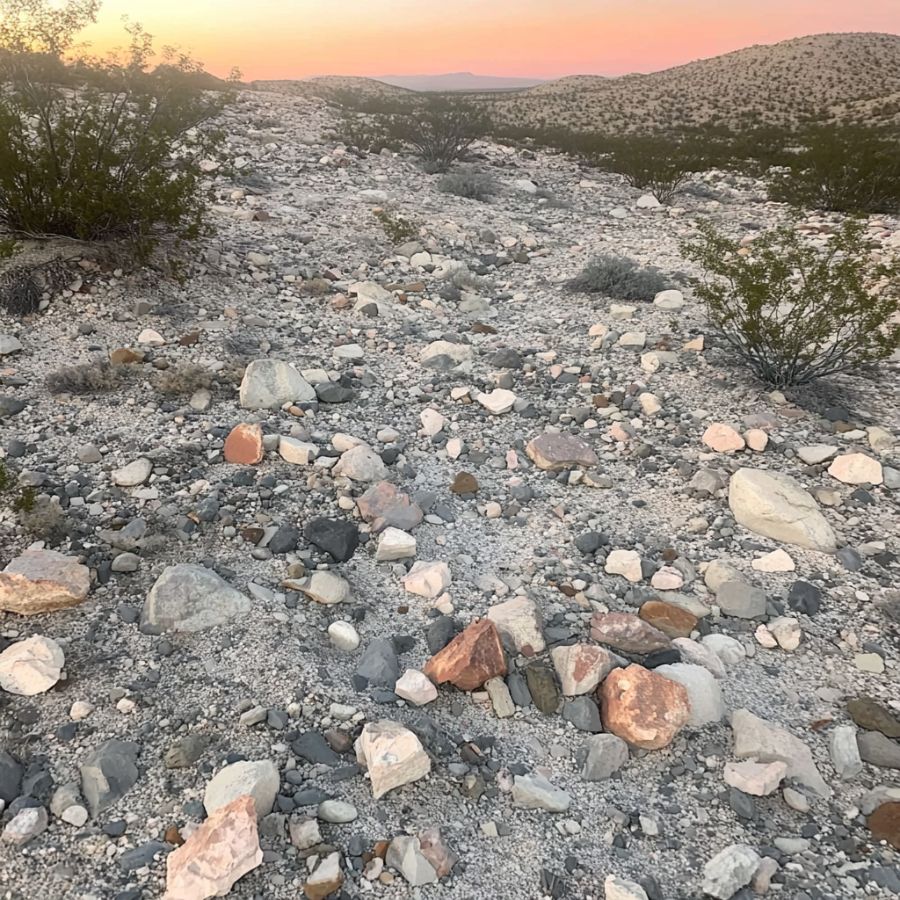
Garnet Hill is a rocky spot in Hiram, Paulding County. This hill has become popular among rock collectors looking for garnets and other minerals. Garnets found here are typically reddish-brown almandine varieties embedded in the local bedrock.
The hill features metamorphic rocks that formed under intense heat and pressure millions of years ago. These conditions were perfect for creating garnets, which grow as distinct crystal formations within the rock. Chlorite minerals can also be found alongside the garnets, adding to the site’s appeal for collectors.
Visitors can find garnets by examining exposed rock outcrops on the hillside. The best specimens are often found after rainfall when the wet stones reveal their true color and shine.
Garnet Hill remains one of Georgia’s reliable locations for amateur gemstone collectors wanting to find these beautiful red minerals without specialized equipment.
Barnesville
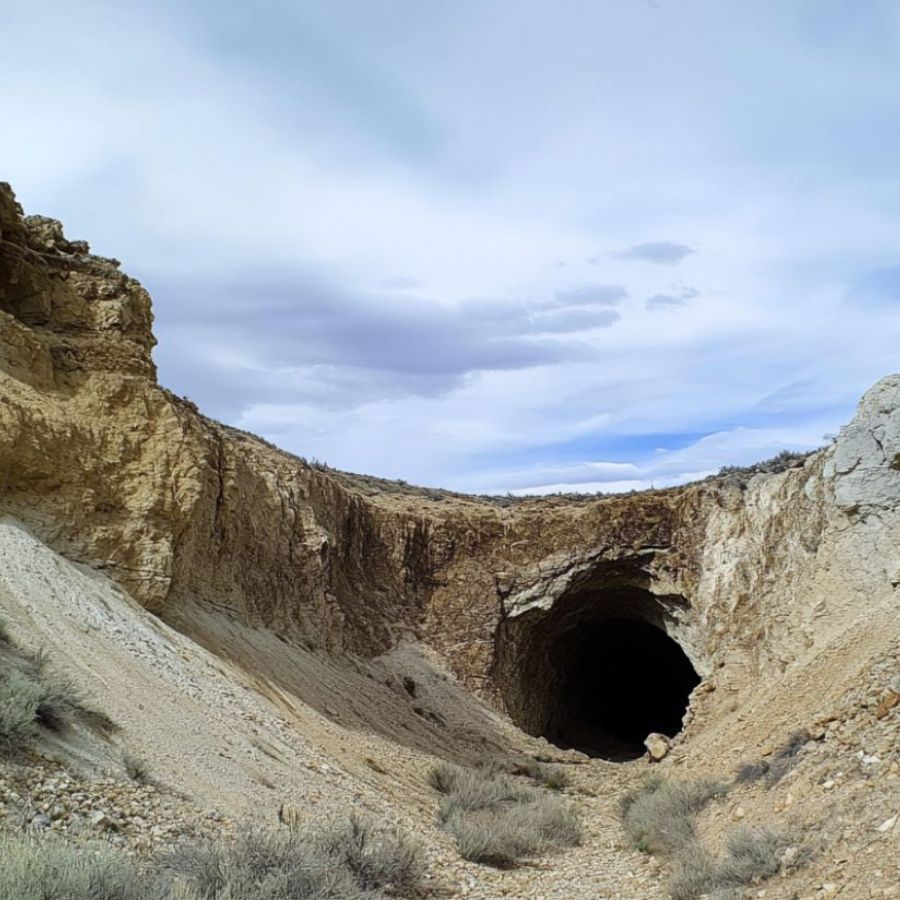
Barnesville sits in Lamar County, within the Piedmont region known for its rolling hills. This small town features a mix of gentle slopes and flat areas, making it an interesting spot for gemstone hunters.
Garnets have been discovered in Barnesville’s vicinity, along with quartz crystals. The area’s metamorphic rocks create perfect conditions for garnet formation.
Early Vaughn Mine and J.T. Means Mine are key locations for finding garnets in Barnesville. These historic mining sites have exposed mineral-rich zones where gemstones can be collected.
Local streams and creek beds also offer good hunting grounds. Many rockhounds sift through stream sediments where garnets appear as dark red, sometimes brownish crystals.
Dahlonega
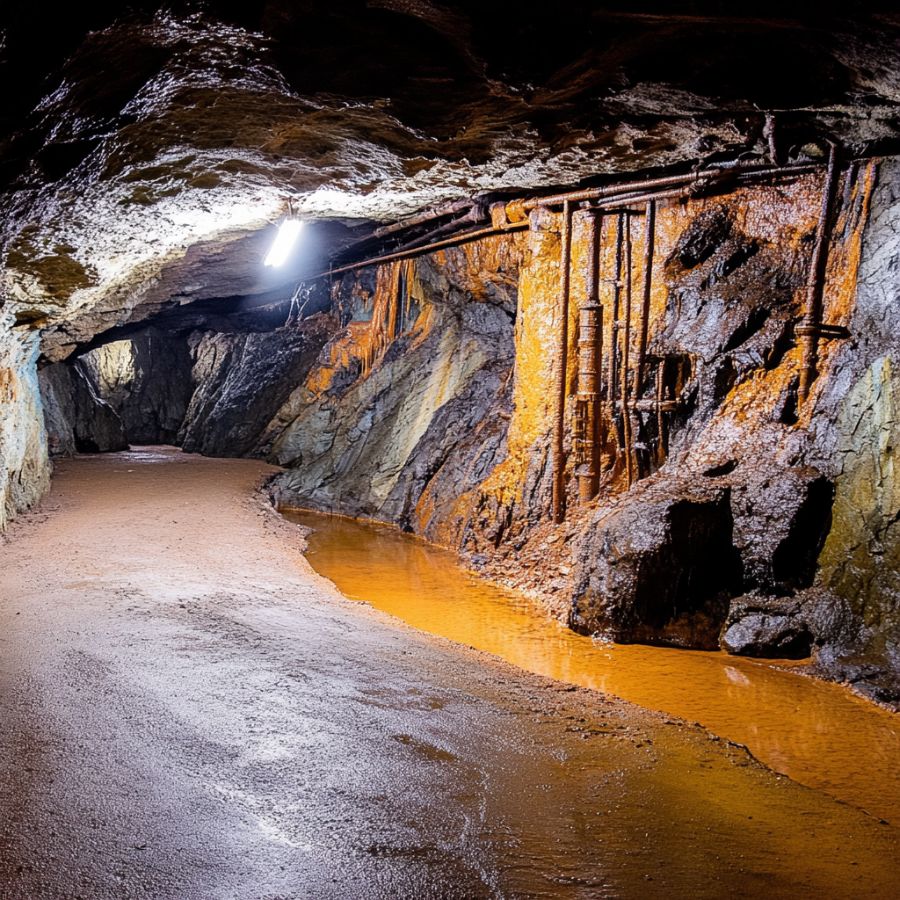
Dahlonega is located in northern Georgia, within the Appalachian foothills. This historic town gained fame as the site of America’s first major gold rush in 1829. Garnets have been discovered alongside gold in this mineral-rich area, making it a special spot for gemstone hunters.
Visitors can search for garnets in the streams and creeks throughout the Chattahoochee National Forest surrounding Dahlonega. Many rockhounds have success along water paths where natural erosion exposes minerals.
Several local mines offer panning experiences where you might find garnets mixed with gold flakes. The Consolidated Gold Mine and Crisson Gold Mine allow tourists to search through material from nearby deposits.
Dahlonega’s unique combination of gold rush history and diverse mineral deposits makes it one of Georgia’s most interesting locations for finding garnets and other treasures.
Cutcane Creek
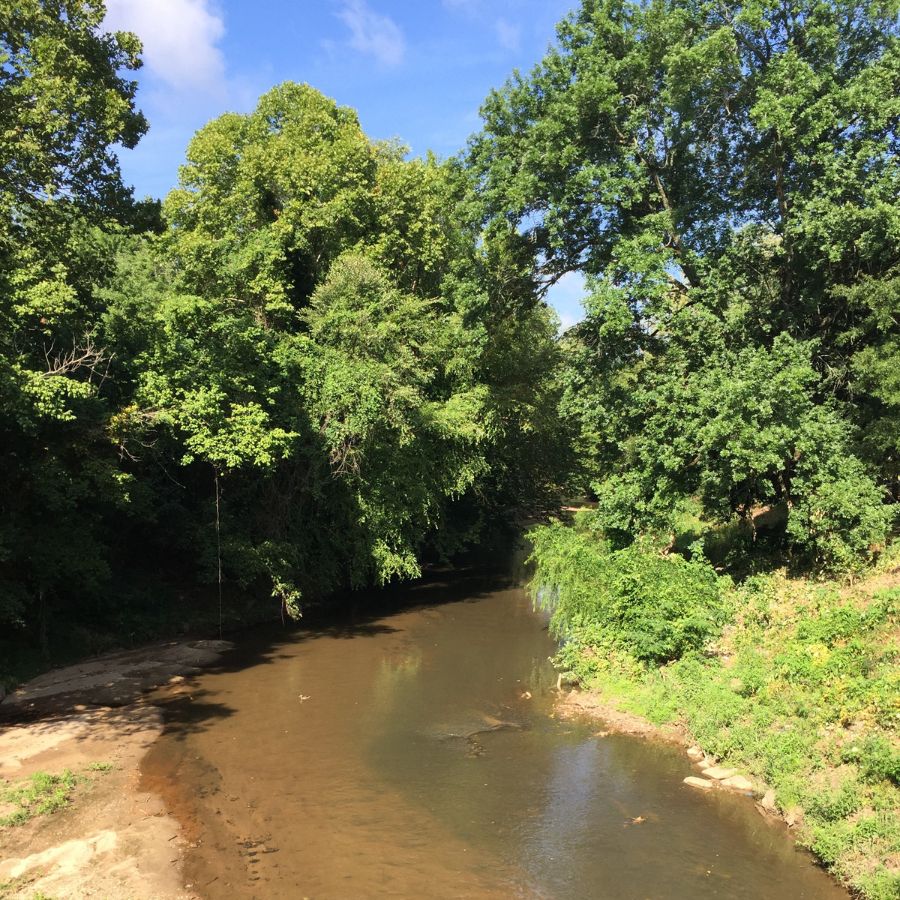
Cutcane Creek runs through Fannin County in northwestern Georgia. This beautiful stream sits at about 1,555 feet elevation near the small towns of Mineral Bluff and Morganton. Garnet hunters have had good luck in this area for many years.
Around Cutcane Creek, you’ll see metamorphic and igneous rock formations that are excellent for rockhounding. Nearby pegmatite dykes (special rock layers) create ideal conditions for garnets to form.
You can find garnets in the creek’s gravel beds and along its banks. Look especially in places where the water slows down, like at bends or in shallow pools.
Many rockhounds bring small shovels and screens to sift through the creek material. Garnets here typically appear as small reddish crystals that stand out against the lighter creek gravel.
Places Garnet has been found by County
After discussing our top picks, we wanted to discuss the other places on our list. Below is a list of the additional locations along with a breakdown of each place by county.
| County | Location |
| Camden | Cabin Bluff deposit |
| Carroll | Bonner Mine |
| Carroll | Treadway Prospect |
| Carroll | Askew prospect |
| Cherokee | Amphlett Mica Mine |
| Cherokee | Cochran Mine |
| Cherokee | Dickerson prospect |
| Dawson | Kin Mori Mine |
| DeKalb | Venable Estate Quarries |
| DeKalb | Wells Quarry |
| Douglas | Keaton-Thomas Prospect |
| Fannin | Epworth |
| Fannin | Number Twenty Copper Mine |
| Fannin | Mobile Copper Mine |
| Fannin | Mount Pisgah prospect |
| Habersham | Batesville |
| Habersham | Liberty Creek |
| Haralson | Reeds Mountain Pyrite Mine |
| Haralson | Tallapoosa Mine |
| Hart | Bailey Mine |
| Hart | Garner Mine |
| Hart | Taylor Mine |
| Hart | Water Hole Mine |
| Hart | Lon Allen Mine |
| Hart | Scott Mine |
| Jasper | Arnall Prospect |
| Jasper | Gladesville Mine |
| Lumpkin | Crown Mountain Mine |
| Lumpkin | Battle Branch Mine |
| Monroe | New Ground Mine |
| Monroe | Owl Hollow Prospect |
| Oconee | Branch Prospect |
| Paulding | Liberty Prospect |
| Paulding | Little Bob Mine |
| Paulding | McGruder copper prospect |
| Pickens | Davis Mine |
| Pickens | Partain prospects |
| Pickens | James Foster prospect |
| Pickens | F. M. Cagle Mine |
| Rockdale | Almond Quarry |
| Towns | Rich Knob prospect |
| Towns | Young Harris |
| Troup | Crosby prospect |
| Troup | Hogg Mine |
| Upson | Boyt Mine |
| Upson | Stevens Mine |
| Wayne | Amelia deposit |

